Finally we managed to import again some specimens of this unusual “striped sock” from Venezuela. The species – there is just the one in the genus Synaptolaemus – was long known under the name S. cingulatus, until Britzki et al. discovered that the species described as Leporinus latofasciatus by Steindachner in 1910 was identical with S. cingulatus. Because S. cingulatus was described about 40 years later, the principle of priority applies and the older name must be used.
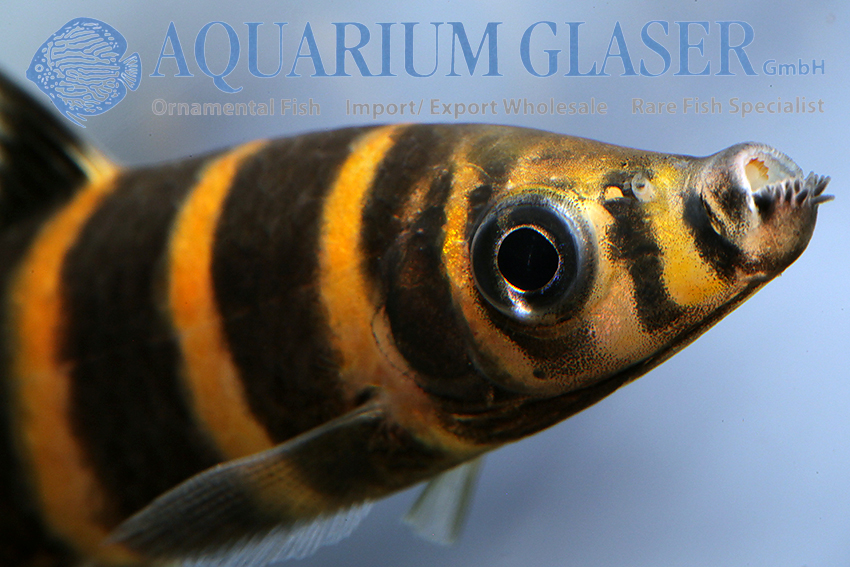
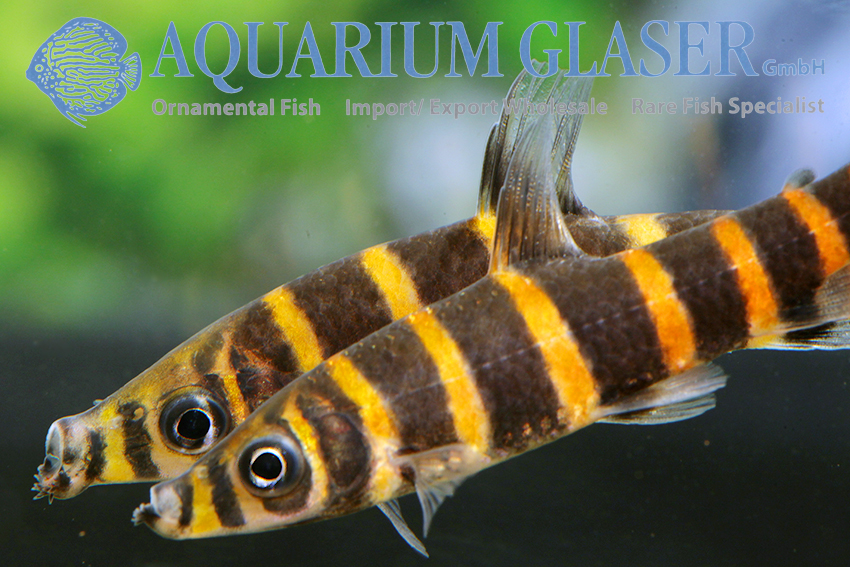
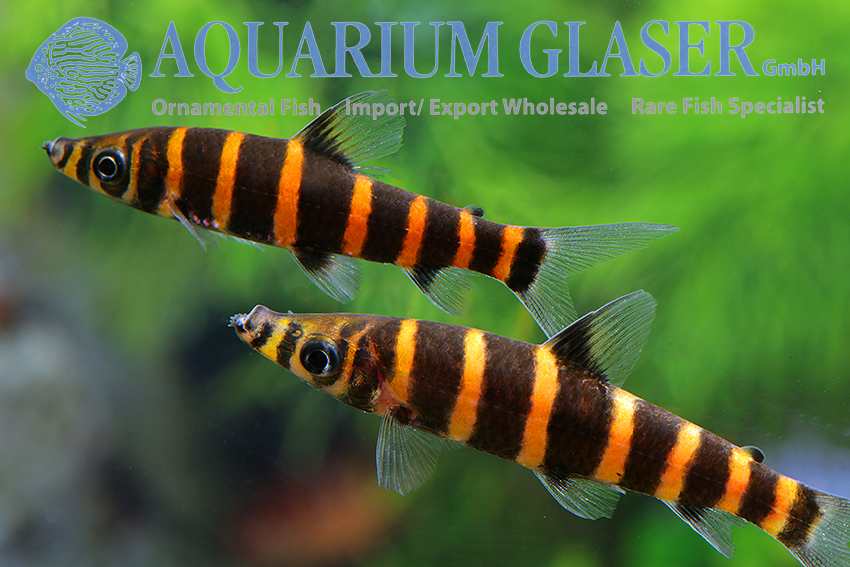
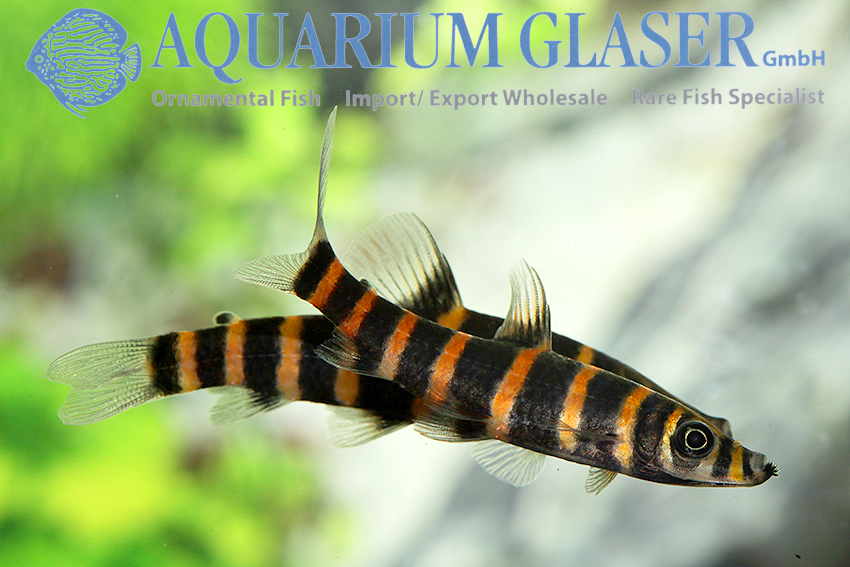
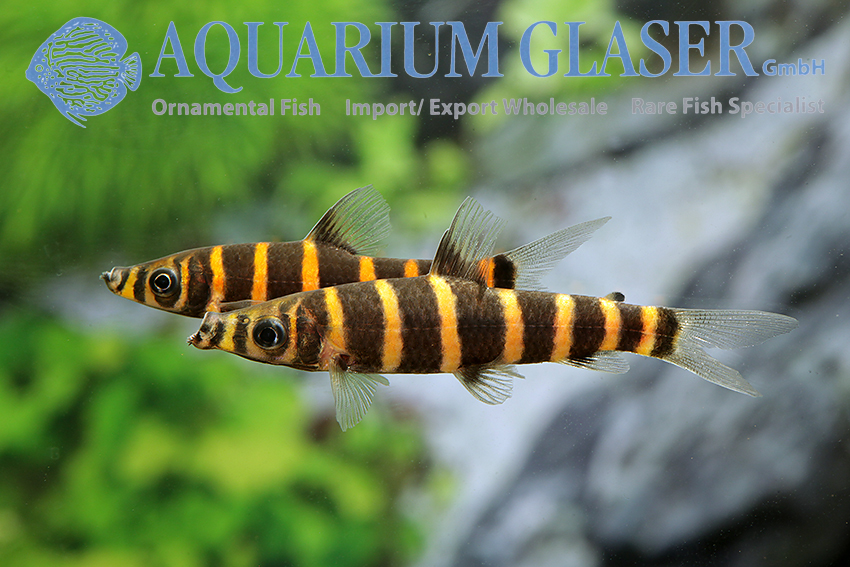
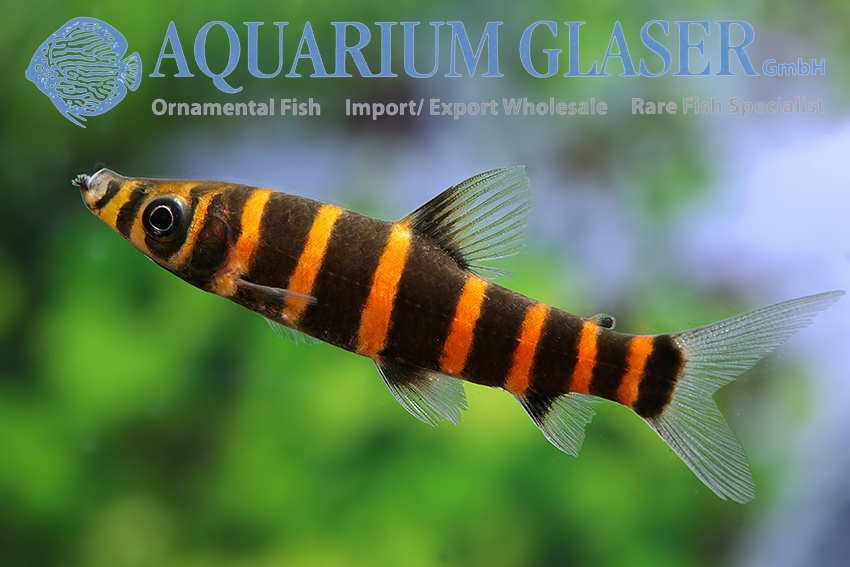
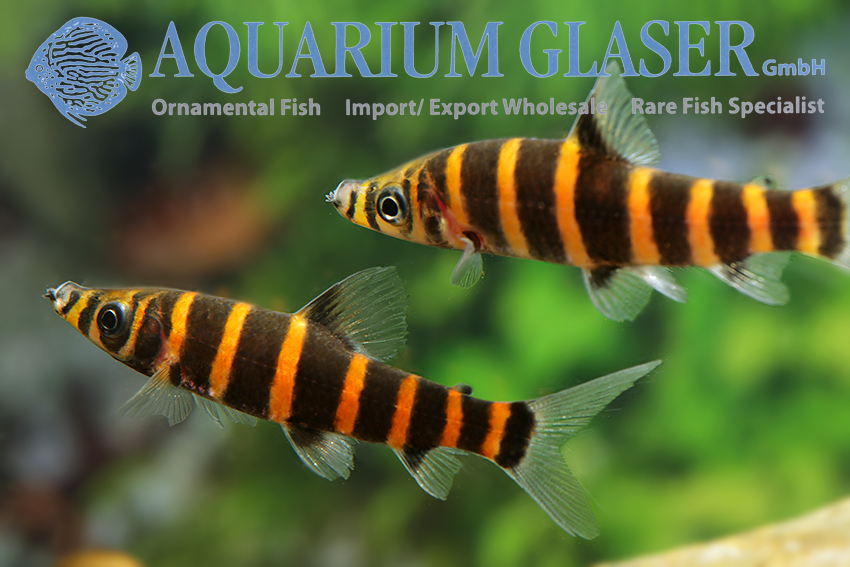
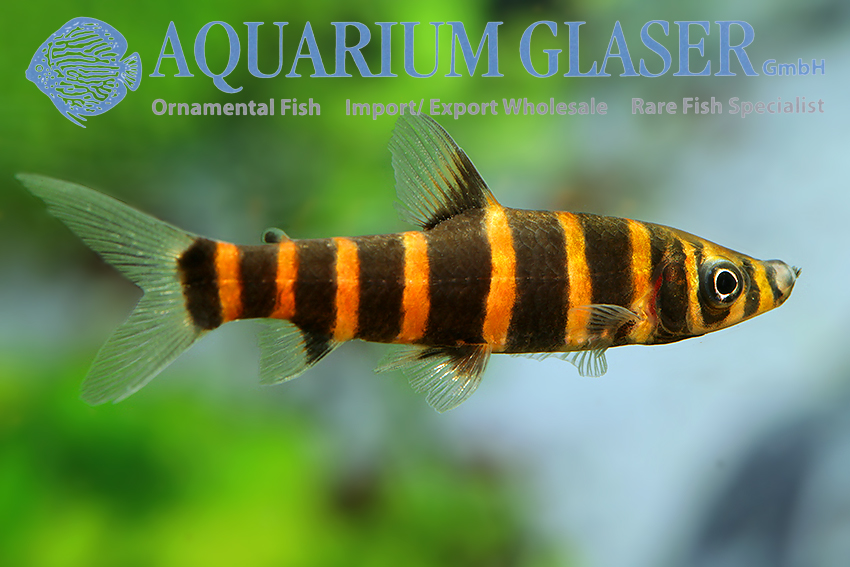
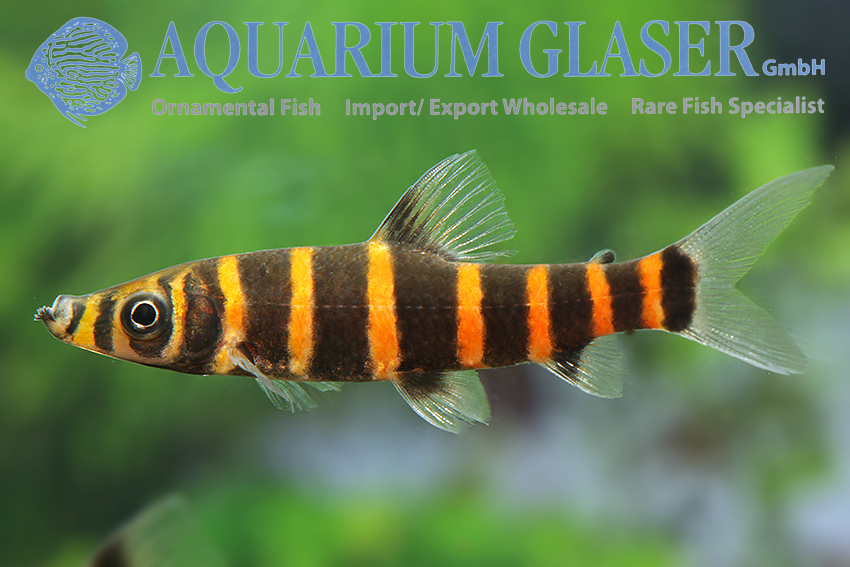
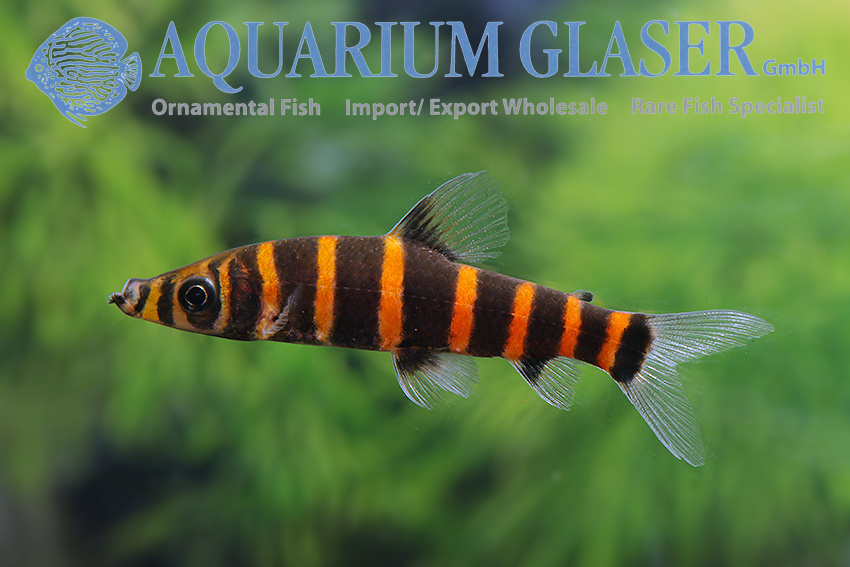
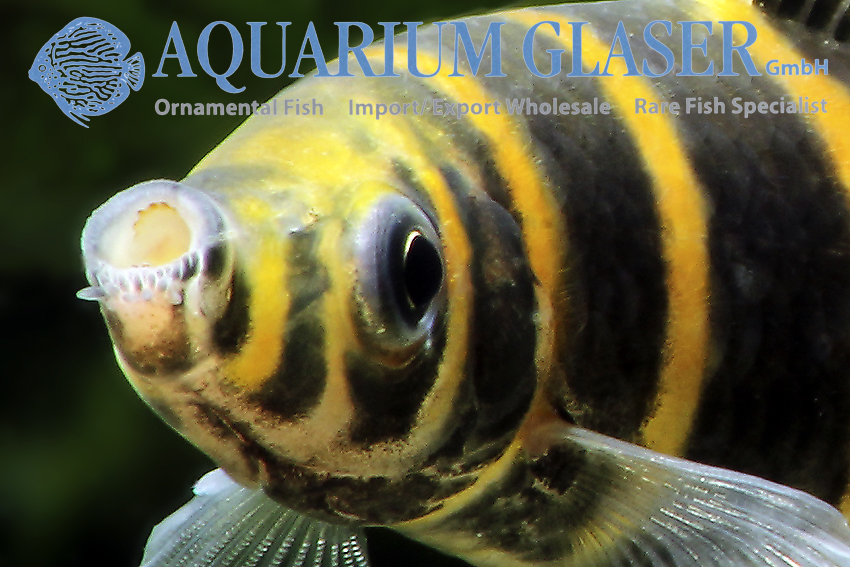
S. latofasciatus is found in the Orinoco, the Casiquiare, the Rio Negro, the drainage of the Rio Tapajos, and the upper Rio Xingu, but it is thought that the species is frequently overlooked and has an even wider distribution. The individual populations may differ somewhat in coloration – the Ventuari fishes have the highest percentage of red in the body rings, those from the Xingu are more yellow – but in general Britski et al. were unable to find any differences that would justify the description of new species or subspecies.
This extraordinary headstander grows to around 10-12 cm long. It is specialized in grazing the undersides of pieces of wood. A quite unusual characteristic of the type is the “frayed” lower lip. Like all headstanders the species is somewhat aggressive towards conspecifics, but several specimens can generally be maintained together. We think on the basis of our observations that males are somewhat smaller and daintier than females. These fishes have proved to not be particularly delicate, though the species needs to be kept somewhat warmer than usual, with 24 °C the lower limit of the recommended temperature range.
For our customers: the fish have code 294883 on our stocklist. Please note that we exclusively supply the wholesale trade. Available in limited numbers only!
Text & photos: Frank Schäfer




